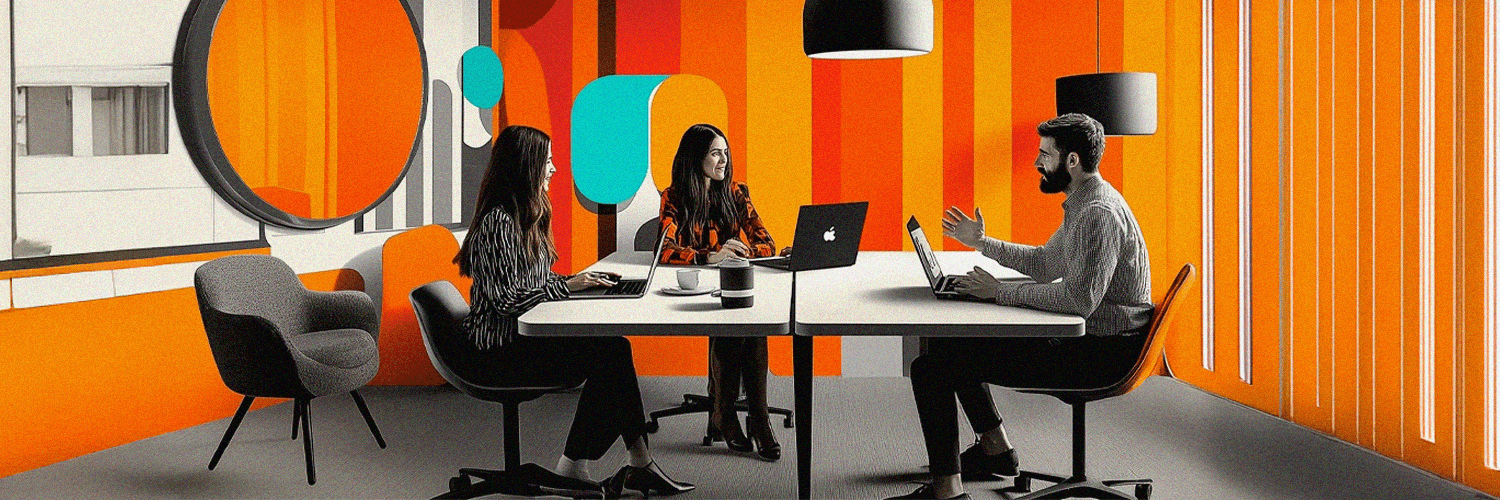Remote and hybrid work are not new, nor are the workplace culture matters associated with them. They have been around for a while, especially as, even before the pandemic, employees asked for more flexibility in the workplace. Many companies complied, others only started to think of a remote workplace strategy once COVID-19 hit and the first lockdowns went into effect.
As more people get vaccinated and the world is slowly easing off on some of the pandemic-related restrictions, an even “newer” normal is shaping up on the horizon. How is workplace culture responding to all this -- and what should you, as a facility manager, HR manager, or entrepreneur do to make sure your workplace experience fits your employees’ expectations?
Read on to find out more.
What Is Workplace Culture, Even?
Workplace culture is defined in many different ways, mostly because it's a concept that can be highly contextual. Culture exists in any social group where individuals share common values, beliefs, and norms. These can be dominant or non-dominant, but usually represent the majority of the members of the group.
What is workplace culture, more specifically?
The easiest and most surface-level way to define it is by looking at it as if it were your company's character and personality. Some companies are all about rapid growth, just as some people are too. Other companies are all about the slow and steady, which is also valid for some people.
Some companies define workplace experience through pizza indulgence, others are all about healthy snacks.
Some companies are all about traditional office chairs and desks, others create home-like office spaces for their teams.
Every company is different, and so is yours -- and that's precisely where workplace culture lies.
The more in-depth, business-oriented way to define workplace culture is the way Indeed.com does it: as the melange between the company’s mission, objectives, expectations, and the values that guide its employees.
The Dimensions of Workplace Culture
Generally speaking, there are three main dimensions of building workplace culture and employee wellbeing:
The Informational Dimension
Simply put, the informational dimension represents the extent to which employees feel informed about what is going on at work and what actions they could take to improve their performance and/or internal operations. If employees feel informed, they will be able to make decisions and build their careers – and your workplace – better than if they lack this crucial piece of information.
The Decisional Dimension
Decisional information represents the level at which employees feel that they can make their own decisions, rather than having to rely on others to make them for them. This can be related to work processes but also extends to other areas of life, such as career planning or even work-life balance.
The Relational Dimension
The third dimension is relational. Relational information is all about connectivity, or social interaction at work. Not only does it encompass professional relationships but also the general environment in which employees feel comfortable sharing their thoughts and opinions with colleagues and managers alike.
Workplace culture is born at the confluence between these three dimensions, their branches, and the nuances each of these can take.
The Present: A Riddled Workplace Culture
Defining and supporting workplace culture was never actually easy. Yet, when the world turned upside down and employees went into lockdown, many HR and facility managers found themselves in a pickle: how do you transfer the sum of everything that defines a company's workplace culture in the digital sphere?
And even more than that, how does one define, build, and maintain a healthy workplace culture as we transition from the "old normal" to the "new normal" and, finally, to the "next normal?". Switching from office work to remote work was difficult enough -- but how do you strike the right balance for everyone when not everyone is in the same place, working the same way, or even in the same time zone?
Though perhaps a little too optimistic, a recurring adage states that "the only constant thing in life is change itself," and this rings true when it comes to professional workplace culture. The workplace culture that has been built within an organization will have to be adapted in order for the company to keep running smoothly and keep employees satisfied.
The Future: What People Truly Want from Their Workplace Culture
You can't read your employees' minds (we know you'd love to, but it is unfortunately not possible, unless you live in a Sci-Fi TV Show on Netflix). What you can do, though, is check out research papers, studies, and statistics on the subject.
This is not only great for getting information on what people actually want from their workplace culture but also for finding out whether your company's culture actually aligns with the expectations of your employees.
An even better way to test the waters and see what your team really wants from the new hybrid work environment?
Ask them.
It sounds overly simplistic, but sometimes, the best way to find out what someone wants is to just politely ask them. That's why employee feedback surveys and interactive feedback games exist, and that's why you should definitely run them.
Technology: A Bridge between the Existing Workplace Culture and the Ideal One
Employees want flexibility. They've been asking for it for a long time. In fact, statistics are quite clear on just how much people needed flexibility from their workplaces, as a 2018 study shows that no less than 96% of employees Before COVID-19, most companies required employees to work from an office (with some providing remote work as a benefit or bonus). When the pandemic hit, everyone worked from home.
Now, we're trying to find a mid-way between the two states, and hybrid workplaces are becoming even more widespread than they were before the virus hit. In many ways, everyone's dreams of "ultimate flexibility" are now coming true.
Switching from office to remote and then to hybrid is not easy, though, and it comes with its specific challenges. Here are some of the more common ones:
Collaboration and Communication
Nobody likes endless emails, endless meetings, and endless explanations. Swift, smart, and comprehensive communication is absolutely key in remote and hybrid teams, and this means you should be very careful with how you choose your communication tools (as well as what procedures you establish in terms of what gets communicated where).
New Employee Onboarding
Even before the pandemic, onboarding a new team member was a difficult task that required clear procedures and processes. As more companies started onboarding remote employees, making sure they are up to speed with all the necessary information and tools became even more crucial.
Employee Reviews and Feedback
Again, this is not something that was particularly easy before COVID-19, but it can be more challenging in a remote/ hybrid context. The right tools can help you streamline these processes, as well feedback implementation and follow-ups.
Office Meeting Scheduling
With most of the world still following at least some social distancing restrictions and many employees feeling different levels of safety regarding office work, you want to make sure you meet everyone's expectations and safety standards. Good tools can help with this by providing you and your team with a bird’s eye view of how each office space is used (and when).
Best Practices for Creating a Workplace Culture in a Hybrid Setting
OK, we have established that workplace culture is very important -- but how do you create it in a hybrid workspace?
Here are some tips you might want to keep in mind:
Start from the Source
Remember your origin? The origin of a workplace culture is always a personal one, and this means you should start by observing how your employees communicate and work before considering a hybrid setup. Read up on how they work, what their working style is like, and check out the kind of tools they use. Decide whether you want to keep things as they are or whether you want to create something new from scratch.
This means that even if your employees don't necessarily use Skype or other instant messaging services as their primary tool for communication, it's still important for you to have a nice discussion about what kind of communications tools your team thinks would be useful for them.
Plan Carefully Before Choosing Additional Tools
Before you go all out and sign up for every single tool out there, make sure to think carefully about your choice. Not all tools are made equal, and not every single one will suit the needs of your remote team members. Even if you do choose to use some kind of collaborative project management or communication tool, you should check out what aspects of the service would be best used by your people before signing up.
Avoid Building New Processes on Top of Old Ones
Remember the saying "if it's not broken, don't fix it"? It is very much applicable here as well. There are many cases of companies that made the mistake of trying to fit their existing workflow into a new hybrid structure without thinking about whether or not it is what their employees actually need. In most cases, this resulted in a "mishmash" of processes and tools that didn't make sense for anyone.
It's fine to adjust the workflow according to the needs of your teams, but make sure you don't try to force your people into doing things they don't want to do or rolling out processes that they've already established as "working" for them. Remember to start from a personal level and create a culture born out of your employees' needs instead of imposing something that doesn't necessarily work for everyone.
Don't Forget about the Social Element in Workplace Culture
If there's one thing that most remote workers will agree on, it is this: a remote job doesn't necessarily mean a remote life. Even if your employees work from home, their life should still include friends and other social activities.
You should always try to plan social events for your people, not only because it's good to have a physical connection with them but because it can be very motivating as well to have a team that feels connected.
Remember: the advice provided in this article is just the tip of the iceberg when it comes to workplace culture in a hybrid environment. In the end, employee experience goes way beyond what kinds of laptops your company provides and whether or not you use Google Meets or Microsoft Teams for video calls.
Your workplace culture transpires in everything your business does when it interacts with your team: from how they are onboarded, to the "internal jokes" that come organically, to how you define "flexibility" for your employees, and how you show gratitude at the end of the day.











